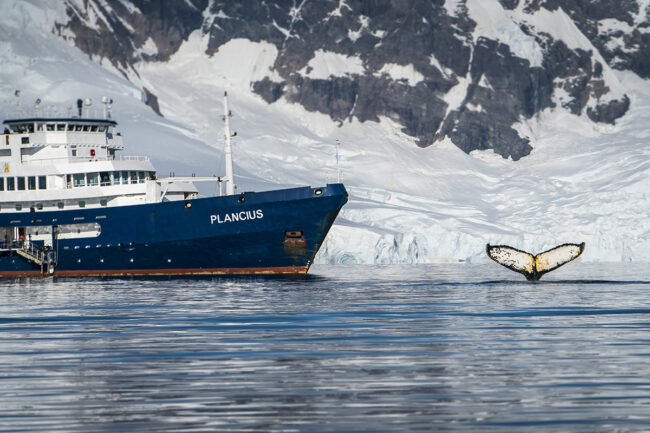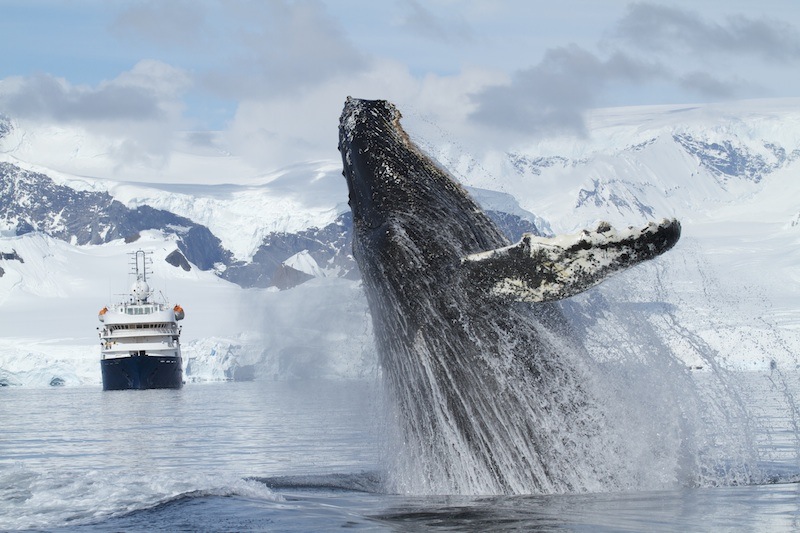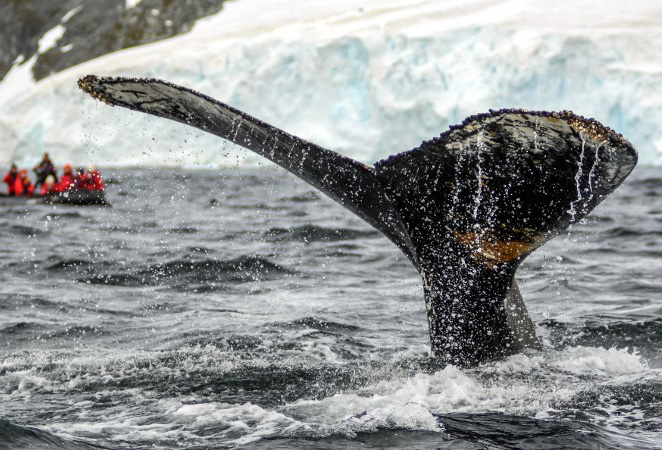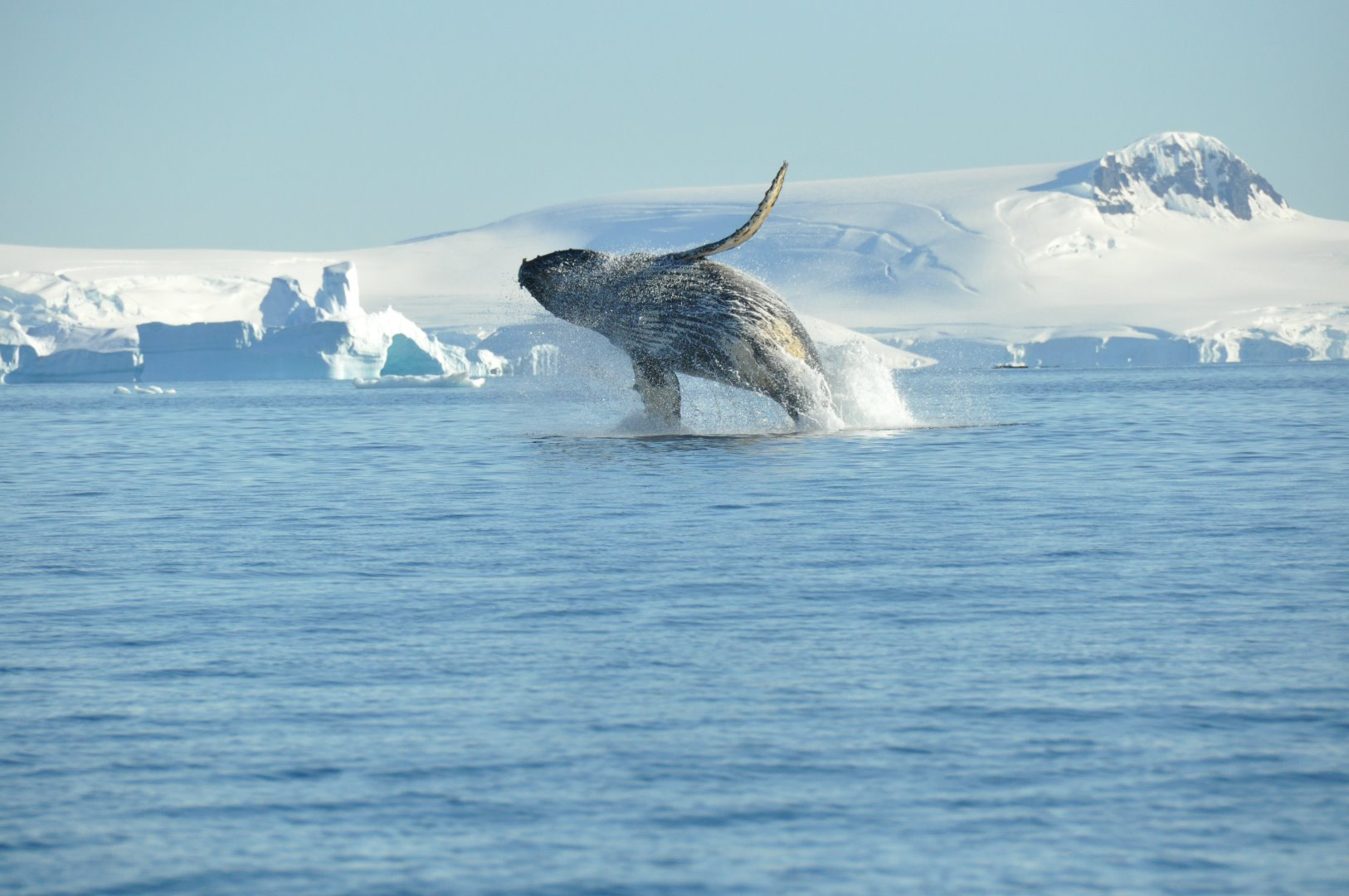The Humpback whale is very popular with whale watchers as it is known for its breaching habits. They are also known for their songs that they sing for up to 20 minutes. Killer whales, also known as Orca Whales, prey upon Humpbacks as juveniles, which is evidenced by the scars found on many of these animals. These whales inhabit all major oceans.

 How smart is a Humpback whale?
How smart is a Humpback whale? It’s believed that whale communication is one of the most sophisticated forms of all animal communication. They use complex songs and body language to convey wants and needs to each other.
They usually live around 45-50 years.
An adult weighs up to 44 tons (39.9 tonnes). That’s nearly six fully grown elephants weighing 15,000 lbs. each!
They are roughly as large as a school bus.
Generally, 40-60 feet (12-18m) long. Allegedly, the longest measured an astounding 89 feet long – that’s Blue Whale length!
They do, and in fact, are the most abundant baleen whale seen in nearshore waters around the Antarctic Penninsula. Therefore, of all the whales you might see on an Antarctic cruise, Humpback Whales are the most likely to be spotted – well at least around the Antarctic Peninsula.

It could, but this has never happened and Humpback Whales are not aggressive towards humans. They swallow around 5,000 gallons of water in a single gulp and this is larger than the volume of a human by quite a bit! After swallowing, they expel all this seawater through their two blowholes.
They nurse for six months. A female gives birth once every 2-3 years. The length of the pregnancy is typically 11-12 months. Baby Humpback Whale calves spend approximately one year living with their mothers. Mother Humpback Whales are called cows. Calves double in length in the first year but continue growing for about the first ten years of their lives.
They can top out at around 15-16 mph (25 kph). They feed at around 1-3 mph (2-5.5 kph). They travel at 3-9 mph (5-15 kph). The fastest humans swim 50 meters is around 5.5 mph.
Babies (calves) and young Humpbacks are occasionally hunted by some Killer Whales (Orcas). Many Humpbacks have scars from Orca attacks, especially on their tails because that is where Orcas aim for when they attempt to pull a young Humpback down into the depths to drown it.
Humans have historically proven to be far better at hunting Humpback Whales. During the years where whaling was legal, humans eradicated approximately 90% of the Humpback Whale’s population. The population is making a comeback today but is still lower than it historically was.

Much like dolphins and killer whales. They have to consciously think about breathing so they can only “sleep” half of their brain at a time.
Hawaii, Japan, and Mexico tend to be favored locations where Humpback Whales usually give birth during the winter months.
They migrate to colder waters in the summer and that’s a good time to spot them on an Antarctic cruise. The calves also migrate to the Southern Ocean alongside their mothers.
Recently there has been quite a bit of rare good news for Humpbacks, especially in Antarctic waters where they are experiencing a baby boom.
Approximately 30,000-40,000 are thought to currently live wild in the world’s oceans. These numbers are likely about 30-35% of what the population used to be prior to whaling. Some estimates have been as high as 80,000 Humpback Whales. They are still threatened, but no longer officially “endangered.”
Now only a couple of countries allow hunting of Humpbacks for subsistence purposes only and only a couple are caught each year.
Ready to find your dream cruise? Have questions? Contact Polar Holidays to schedule a free consultation with one of our booking specialists today!